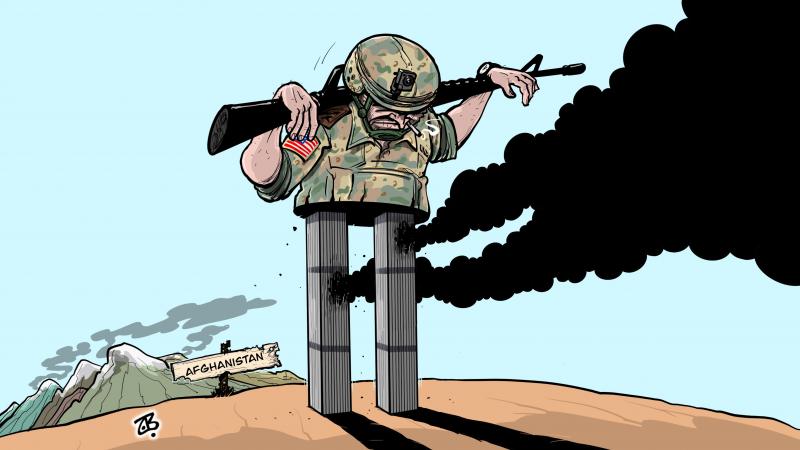We’ve heard many of the numbers. But what isn’t quantified may be more important.
Some of the raw numbers
The war lasted 7,262 days, according to The Conversation.com, a great daily news website. It cost the lives of 2,455 U.S. service members and tens of thousands of civilians. And the price tag to American taxpayers of U.S. engagement in Afghanistan? Around $2.3 trillion.
Costs of War Project
These are some of the findings released by the Costs of War Project. The Project is an initiative that pulls together the work of more than 50 scholars to provide as full an account of the human, economic and political costs of the Iraq and Afghanistan wars as possible.
‘Never a complete picture’
Neta Crawford, a foreign policy expert at Boston University and a co-director of the project, writes that while figures on their own “can never give a complete picture of what happened and what it means, they can help put the Afghanistan war in perspective.”
Numbers may rise
Although the U.S. military’s involvement in that conflict is now officially over, some numbers may continue to rise. For example, veterans returning to America with physical or mental scars will continue to need government-funded medical support, perhaps for many years to come.
Start of the war
On September 18, 2001, the U.S. House voted 420-1 and the Senate 98-0 to launch the war, not just in Afghanistan but in an open commiitment against “those responsible for the recent attacks launched against the United States.” U.S. Rep. Barbara Lee of California cast the lone vote against the war.
7 days
In other words, the U.S. Congress took seven days after the 9/11 attacks to deliberate on and authorize the war. And this now marks the U.S.‘s longest war. Or is it? The U.S. has not officially ended the Korean war. And U.S. operations in Vietnam, which began in the mid-1950s and included the declared war from 1965-1975, also rival Afghanistan in longevity.
President Bush’s prediction
U.S. President George W. Bush told members of Congress in a joint session on September 20, 2001, that the war would be global, overt, covert and could last a very long time.
“Our war on terror begins with al-Qaida, but it does not end there. It will not end until every terrorist group of global reach has been found, stopped and defeated. … Americans should not expect one battle, but a lengthy campaign, unlike any other we have ever seen,” Bush said.
Bush’s April promise
The U.S. started bombing Afghanistan a few weeks later. In April 2002, President Bush promised to help bring “true peace” to Afghanistan: “Peace will be achieved by helping Afghanistan develop its own stable government. Peace will be achieved by helping Afghanistan train and develop its own national army. And peace will be achieved through an education system for boys and girls which works.”
But the war has spread
The global war on terror was not confined to operations in Iraq and Afghanistan. The U.S. now has counterterrorism operations in 85 countries.
The human cost
Most Afghans alive today were not born when the U.S. war began. The median age in Afghanistan is just 18.4 years. Including their country’s war with the Soviet Union from 1979 to 1989 and civil war in the 1990s, most Afghans have lived under nearly continuous war.
Nearly 1 million war veterans
There are, according to the U.S. Bureau of Labor Statistics, 980,000 U.S. Afghan war veterans, and 507,000 served in both Afghanistan and Iraq. As of mid-August 2021, 20,722 members of the U.S. military had been wounded in action in Afghanistan, not including the 18 who were injured in the attack by ISIS-K outside the airport in Kabul on August 26.
Medical advances
Of the veterans who were injured and lost a limb in the post-9/11 wars, many lost more than one limb. About 40 to 60 percent also sustained a brain injury. Because of some of the lessons learned and the innovations that have taken place on the battlefield, we saved service members who in previous conflicts would have died.
‘Death gratuity’
The U.S. has paid $100,000 in a death gratuity to the survivors of each of the service members killed in the Afghanistan war, totaling $245.5 billion.
Civilian casualties
More than 46,000 civilians died in the Afghanistan conflict. These are the direct deaths from bombs, bullets, blasts and fire. And thousands more were injured, according to the United Nations Assistance Mission in Afghanistan.
Displaced Afghans
And while the number of Afghans leaving the country has increased in recent weeks, more than 2.2 million displaced Afghans were living in Iran and Pakistan at the end of 2020. The United Nations Refugee Agency reported in late August 2021 that since the start of that year, another 558,000 people have been internally displaced, having fled their homes to escape violence.
And then there’s malnourishment
According to the U.N., in 2021 about a third of people remaining in Afghanistan are malnourished. About half those under age 5 experience malnutrition.
The human toll also includes the hundreds of Pakistani civilians who were killed in more than 400 U.S. drone strikes since 2004. Those strikes happened as the U.S. sought to kill Taliban and al-Qaida leaders who fled and sheltered there in late 2001 after the U.S. invasion of Afghanistan. Pakistani civilians have also been killed in crossfire during fighting between militants and the Pakistani military.
Disability and medical costs
The total costs so far for all post-9/11 war veterans’ disability and medical care costs are about $465 billion through fiscal 2022. And this doesn’t include the future costs of all the post-9/11 veterans’ medical and disability care, which Harvard University researcher Linda Bilmes estimates will likely add about $2 trillion to the overall cost of care for veterans of the Iraq and Afghanistan wars between now and 2050.
No quick victory and quite an aftermath
The war in Afghanistan, like many other wars before it, began with optimistic assessments of a quick victory and the promise to rebuild at war’s end. Despite Bush’s warning of a lengthy campaign, few thought then that would mean decades. But 20 years later, the U.S is still counting the costs.


One thought on “The known and unknown costs of Afghanistan”
Wonderful beat ! I wish to apprentice while you amend your website, how could i subscribe for a blog web site? The account helped me a acceptable deal. I had been a little bit acquainted of this your broadcast offered bright clear idea
Comments are closed.